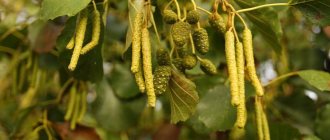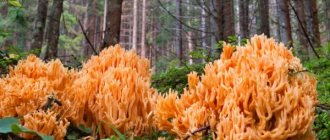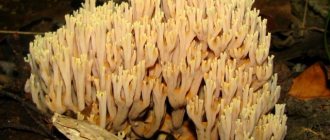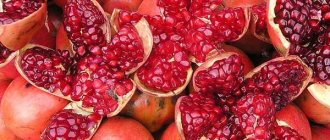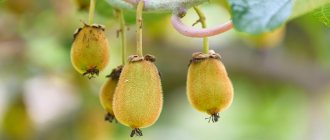Historical homeland of the plant
This plant has been known to people since ancient times. In ancient Rome, the fruit was called a granular apple. This plant was also loved in Egypt. Indeed, in the vicinity of Carthage there were many gardens with these fruits. Therefore, pomegranate is often called the Carthaginian apple.
The first seedlings were brought to Carthage by the Phoenicians in 825 BC. They sailed from the eastern side of the Mediterranean Sea, because there was active trade in this place. Soon the Romans came to these lands and destroyed everything, leaving only pomegranate gardens.
For a long time, the fruits of these trees were considered the main ones on the royal table. After all, their peel resembled a crown.
Where does pomegranate grow? These trees thrive in subtropical and tropical climates with prevailing droughts. Today this tree grows all over the world. It was brought to the USA and Mexico, and is common in Europe and Asia. You can even see how pomegranates grow in Russia.
Where does pomegranate grow?
The natural climatic conditions for this fruit are considered to be subtropics and tropics. The tree easily tolerates drought, which is not uncommon in such areas. Thanks to breeders, pomegranate is grown in all parts of the world. Now the Carthaginian apple can be found even in the USA, Mexico and Russia. These countries are far from the historical homeland of pomegranate, so only strong or specially bred varieties survive here.
The heat-loving plant does not tolerate severe frosts. Under natural conditions, the weather in winter should not be colder than 0°. The minimum temperature in summer is +20°. Due to their close location to the sea, the tropics and subtropics have a mild climate. The most common pomegranate is in:
- some regions of Central Asia;
- countries of South-West Asia;
- North West India;
- Eastern Transcaucasia;
- North Africa;
- southern part of Europe.
Description of the variety
Many people ask whether pomegranate is a fruit or a berry. After all, the fruits of this plant are very similar in shape to an orange or an apple, but inside they have up to 1000 seeds located under a dense peel. According to biological classification, the fruits of this plant are considered berries.
The pomegranate tree reaches 6 m in height. But there are also dwarf varieties in the form of shrubs. The tree trunk is small with thorny and thin branches. The bark of the tree has a light brown tint. How do pomegranates grow? The plant blooms from May to August with large and beautiful flowers. The flower is bell-shaped. Its shades can be different: yellow, white, red-orange.
The fruits are spherical, 12 cm in diameter. Each of them can reach 0.5 kg. Many people are unsure of their judgment and ask the question: “Is a pomegranate a fruit or a berry?” Experts classify the fruits of this plant as berries. Their dense peel can have different shades: brown, yellow-red. The seeds are hidden under the skin in a sweet and sour red shell. They contain many useful vitamins and microelements, acids and monosaccharides, tannins. In one season, about 60 kg of crop can be harvested from one tree.
So where does pomegranate grow? Today this plant is more common in Italy, Greece, the Middle East, the Caucasus and Crimea. This plant is rarely found in wild form.
What does a pomegranate look like?
The fruit of this tree usually has a round, slightly flattened shape. Full maturity usually takes 120 to 150 days. The skin of an ordinary pomegranate is colored in shades from orange to brown-red. The color depends on the variety. Visually, the fruit resembles an orange, but with a smoother surface and a protruding part at the bottom (testis). Skin with a slight gloss.
Growing conditions
Under what conditions and how do pomegranates grow? The plant requires a lot of light, so ideal conditions for growth are regions with a prevailing hot climate. After all, if there are few sunny days in a year, the pomegranate may not bloom.
To obtain large, juicy and tasty fruits, hot weather is required throughout the summer. In winter, pomegranate leaves fall off. The tree tolerates frosts down to -12°C.
Fruits from a pomegranate tree can be obtained on average for 60 years. But there are also exceptions. For example, in Azerbaijan, pomegranates grow, which have been bearing fruit for 100 years, and in France - 200 years.
When does pomegranate ripen?
The first pomegranate harvest is harvested when the plant is 3-4 years old. If the tree was propagated vegetatively, then already in the second year. After this, the tree continues to bear fruit for more than 100 years, but the highest yields are observed in the first 55-60 years.
The growing season lasts from 6 to 8 months. The crop has a long season of flowering, fruiting and fruit ripening. From formation to full maturity it takes from 4 to 5 months.
In hot countries, when a pomegranate ripens, it cracks right on the branches if it has not been removed from the tree earlier, but the grains do not spill out. Such fruits are not suitable for transportation, but have a rich taste, so local residents enjoy them.
In countries with colder climates, the leaves partially fall off when pomegranates ripen. Large bright fruits on bare branches look especially unusual.
The ripening season of pomegranates depending on the place of growth:
- Crimea . Pomegranate is found not only in gardens, but also in public gardens and city parks. The fruits ripen for about a month, from the beginning of October.
- When does pomegranate ripen in Azerbaijan ? Here the harvest begins on October 26 and ends on November 7. At this time, a pomegranate fair is held in the country. Azerbaijani fruits are not distinguished by their perfectly even shape or smooth shiny skin, but they have a rich, sweet taste.
- In Turkey . This is the main exporter of pomegranates to Russia. Large round glossy fruits with bright skin grow here. The ripening of the Turkish harvest continues from the second half of September until the end of October.
- Armenia . The season begins in mid-October and continues until late autumn. Very sweet and juicy fruits grow here.
- Abkhazia and Georgia. Fruit ripening also occurs in mid-October.
- Tajikistan . The fruits begin to be harvested as early as October 10; later varieties ripen by the end of the month.
- Israel . The pomegranate harvest season in Israel lasts from August to February, depending on the variety. It is one of the main exporters of red granular fruits. The main buyer of Israeli garnets is Russia.
- Sochi . The ripening period lasts from October to early November.
- Dagestan . Earlier fruiting is observed here. The first pomegranates can be tasted in the second half of September.
- Iran . More than 100 varieties of pomegranate are grown here. Ripening of the early ones begins at the end of September, the bulk ripens from mid-October to the end of November. In mid-November there is a pomegranate festival called “One Hundred Grains of Ruby”.
- Tunisia . The juicy and sweet fruits are harvested in September.
- Greece . October is considered pomegranate season.
- Spain . Due to the wide variety of varieties grown here, pomegranates are harvested from October to December.
Signs of a ripe fruit
If you pick an unripe pomegranate, it will ripen at home. However, the taste of such fruits will be worse than those ripened on the tree. Therefore, fully ripe pomegranates are usually collected by cutting them from the branches with pruning shears. The harvest can be stored for more than 3 months.
How to identify a ripe pomegranate fruit:
- Grains. In ripe specimens they have an elongated shape with characteristic, clearly visible ribbing.
- Bright shade of peel. Burgundy, pink and red pomegranates are available for sale. Specimens with light spots are not ripe. The darker the peel, the sweeter the fruit.
- Appearance of the peel. The shell should be dry to the touch, without cracks, dents or other damage. The described signs indicate overripeness of the fetus.
- Tapping test. If you knock on a ripe fruit, the peel will make a ringing “metallic” sound. If it is dull, it means the pomegranate is unripe.
- Smell. The richer the aroma emanating from the peel, the less ripe the fruit. Ripe pomegranates practically do not emit any aroma.
- Weight. If the fruit weighs more than it appears, it is ripe. Unripe specimens are light.
- Ovary. Ripe pomegranates are dry, without green impurities.
Types and varieties of pomegranate
Many people want such a fruit tree to grow in their garden or in their home. But how to grow pomegranate? First of all, you should understand the variety of varieties of this plant.
According to the classification of plants, pomegranate belongs to the Derbennikov family. At the moment, there are only 2 types of these plants: ordinary and Socotran pomegranate.
Socotra pomegranate grows in only one place - on the island of Socotra. This variety grows on its own; it is not specially planted. After all, it is not characterized by such a pleasant taste as an ordinary pomegranate.
As for the ordinary pomegranate, it is distributed throughout the world. It is found not only in cultivated form, but also in the wild.
Today there are many varieties of pomegranate. Each of them has a specific taste and size of the fruit. Today we will look at varieties that grow in regions close to our state.
Many people ask whether pomegranate grows in Crimea. Yes, the Crimean striped pomegranate variety was created in the Nikitsky Botanical Garden. This is a tree of small height with fruits up to 300 g. The peel of the fruit is thick, the grains are sweet and sour with a dark cherry hue.
- The Gyulosha red and pink variety grows in Azerbaijan. The peel of the fruit is thin, red and pink. The grains are juicier and larger than the previous variety, but more acidic.
- Bala-mursal grows in Azerbaijan. This tree is small in size, up to 3 meters in height. The weight of 1 fruit reaches 500 g. This variety is characterized by high yield. From one bush you can collect 50 kg of sweet and sour fruits per season.
- The Nikitinsky early variety is a small shrub with large fruits. The fruits are juicy, large, sweet with a slight sourness.
- The dwarf pomegranate is an ornamental plant, but its fruits are edible. The weight of one pomegranate does not exceed 100 g, but the taste of the fruit is the same as an ordinary one. The fruits differ from ordinary varieties only in size. The height of the bush reaches 1 m. This variety is suitable for growing at home. This plant blooms already in the first year of life with a tree height of only 25 cm.
- Achik-dona grows in Tajikistan and Uzbekistan. Many people love the large and sweet grains of these pomegranates. The productivity of this variety is high. You can collect 40 kg of fruit from one tree.
Description and characteristics of pomegranate
Pomegranate is a long-lived plant from the Derbennikov family, genus Pomegranate. On average, it actively grows and bears fruit for about 100 years. In nature, there are trees that are about 300 years old.
When grown on an industrial scale, every 50-60 years, pomegranate plantings are cut down and replaced with new plants, since by this time the crop yield decreases.
This is interesting! During the Middle Ages, the pomegranate was called Pomum granatus, which translates as “seed apple.” In Ancient Rome, the plant was called Malum granatus - “grainy apple”. Later, C. Linnaeus gave the culture an official name - Punica granatus, which translates as “Punian granular”. From Italian and German, the name of pomegranate is still translated as “apple”.
For comfortable growth, pomegranate trees require a subtropical climate. The plant can withstand cold temperatures down to -15°C, and at temperatures of -20°C and below, its entire above-ground part freezes over.
The plant loves light, so it is planted in open areas. To make the fruits large and sweet, they must be shaded by leaves. This is taken into account when forming the crop crown.
Pomegranate is not picky about soil composition. Able to grow even on sandy and saline soils.
The plant is hardy and famous for its sleeplessness. If the trunk and branches of a tree are completely covered with sand, it will sprout new adventitious roots, and the old root system will gradually dry out. This is proven by a cemetery of pomegranates with multiple rooting of tiers along the trunk, found near the Ganja-Gai River.
Pomegranate is not picky about watering and humidity. It tolerates drought well. However, to improve fruiting, it is recommended to spray the crown. On dry days, the soil is periodically moistened.
Like all cultivated plants, pomegranate is susceptible to diseases and pest attacks. It is most often affected by Phomopsis (twig cancer) and sooty fungus. Among the pests, the most common problem is considered to be pomegranate mite, carnation leaf roller, corrosive woodworm, pomegranate codling moth, and aphid.
Breeders are constantly developing new varieties of pomegranate with increased resistance. When grown on an industrial scale, the problem is combated with the help of chemicals.
Botanical description
Pomegranate is not only a source of tasty and healthy fruits. Trees look aesthetically pleasing during flowering and fruiting periods.
Cultivated varieties are usually grown in the form of a tree 3-6 cm high. In the wild, the type of plant depends on the conditions and method of formation; in mountainous areas and with a lack of soil, pomegranate grows like a shrub.
Pomegranate branches are thin, but flexible and strong, capable of supporting heavy fruits. They have thorns on them. The closer the plant is to the wild form, the longer and sharper the thorns on the branches.
The leaves are opposite, elongated, pointed on both sides, glossy, bright green. The maximum length is 8 cm, and the width is 2 cm. In the tropics it grows as an evergreen tree, and in countries with cold winters it sheds its leaves when frost occurs.
Flowers of 2 types. Bell-shaped specimens are sterile. They do not have ovaries and fall off after the plant has flowered. There are most of these flowers on the tree. The pitcher-shaped specimens are bisexual and have a noticeable ovary at the base. It is from them that fruits are formed.
There are flowers of intermediate forms. In the fruit pomegranate they are red-orange, simple, have a leathery cup with 5-7 pointed lobes. It contains thin, delicate petals, stamens and a style with a thickened, lobed stigma. In decorative varieties of the plant, flowers can be simple or double, in red, pink, white and variegated shades.
The fruits are spherical in shape, with a retained leathery, crown-shaped pericarp. The scientific name for pomegranate berries is pomegranates . The hard peel, which reliably protects the pulp from damage, can be red (the most common option), yellow, orange, brown, brown. It is inedible, but is actively used in medicine and cosmetology.
Beneath the skin are numerous pomegranate seeds, which are seeds surrounded by juicy pulp. It comes in dark and light red, pink or yellow. It tastes sour, sweet, sour-sweet.
The seeds are numerous. Their number can reach 1200. They are located in 6-13 chambers, separated by a dense cream-colored film. Bones can be hard or soft. Reproduction by a generative method is possible.
This is interesting! About 60 kg of fruits are harvested from one pomegranate tree per season.
Origin and historical homeland
Scientists believe that pomegranate is an ancient crop, dating back at least 4 thousand years. It is believed that the fruits of the plant were used as food by ancient people of the Stone Age.
Persia (modern Iran) is considered the historical homeland of culture. Also in ancient centuries, the plant was distributed wild in Carthage (modern Tunisia), Afghanistan, Turkey, Transcaucasia, and Central Asia.
Pomegranate trees have been cultivated since ancient times and are distributed throughout the Mediterranean. The culture was brought to America during the time of the Spanish conquistadors. Later, the plant spread throughout all countries and cities with a subtropical climate.
Pomegranate was especially revered in Greece. Poets sang about it, and the best warriors were awarded fruits cast in gold. Mention of the grainy apple appears in the Old Testament.
This is interesting! Some peoples believe that the pomegranate was the apple that seduced Eve in the Garden of Eden.
How does wild pomegranate grow?
Wild pomegranate thickets are most often found along ridges, near mountain rivers, on rocky, sandy and pebble-alluvial soils.
In favorable conditions, the plant grows into a tall tree. On mountain slopes it becomes shrub. The more favorable the conditions for growth, the higher the culture.
The fruits of wild pomegranate are smaller than cultivated ones. They have a sweet and sour tart taste. The peel is bright red or orange with light spots. The grains are light red. The seeds are hard.
Pomegranate at the dacha
Don’t know how to grow pomegranate in your garden? First of all, you should determine the region of your residence. After all, this information will be useful for people who live in the southern regions of Russia, in Crimea. To get a good harvest, you should choose a large sunny plot of land.
In the first year of life after planting, it is necessary to take good care of the plant. You should definitely feed him. Experts recommend using Kristalon. This drug promotes the development and flowering of the plant. Fertilize the plant using a foliar method.
All weeds should be removed regularly.
In mid-autumn it is necessary to cover the pomegranate. All branches are tilted and tied to stakes. Then sprinkle with earth. This procedure is repeated every year.
In what areas of the Krasnodar Territory and Dagestan does it grow?
In Russia, pomegranate orchards grow in Dagestan, Crimea and the Krasnodar Territory , namely in the areas adjacent to the greater Sochi. In Dagestan, where there is great natural potential for growing pomegranate, this plant is cultivated mainly in its southern regions, with a climate ranging from temperate to dry subtropical. Namely in the following areas:
- Magaramkent.
- Derbent.
- Akhtynsky.
- Agulsky.
Currently, pomegranate trees in the republic are grown mainly in private farmsteads, where the total number of pomegranate trees reaches 20 thousand. In the public sector, the area allocated for pomegranate gardens is very small, amounting to about 10 hectares.
Planting a pomegranate
Planting a seedling is simple. Dig a hole 60 x 60 x 60 cm. Throw several shovels of the top fertile layer of soil onto the bottom. Afterwards, the seedling is carefully placed in the hole and covered with earth. Water generously.
Pay attention to the soil. If it is clayey and too oily, it should be diluted with sand. But if, on the contrary, sand predominates, then fertile soil should be placed in the planting hole.
Please note that it is strictly forbidden to add additional fertilizers (humus, manure) to the planting hole. This can destroy the young plant.
The seedling must be lowered into the hole so that it is 10 cm deeper from the planting level in the nursery. This method of planting has a beneficial effect on the formation of a more powerful root system. This means that the plant will take root faster and better.
When planting, the soil must be thoroughly filled with water and the planting site compacted. This will prevent voids from forming in the soil. After a day, abundant watering should be repeated. Afterwards, the ground is covered with old sawdust or leaves, which will allow moisture to be retained in the ground longer.
In the future, the tree is watered once a week.
How to replant pomegranate
Pomegranate should be grown in a bucket at home. The bucket should be spacious so that the roots of the pomegranate tree can grow well. If the seedling is comfortable, you will understand this by its flowers.
The first time the pomegranate needs to be replanted is after about a year. The next time, replanting will be needed only when the root is cramped in the bucket.
Each new bucket should be larger and larger compared to the previous one, by about 4 centimeters. After 5 years of replanting, pomegranate is no longer required, but it is recommended to change the top layer of soil from year to year.
Purchasing seeds in bulk: 3 signs of a reliable storeHow to propagate plums: the best ways to grow, care and plant with your own hands. Video instructions and 120 photos
At what distance to plant grapes from each other: tips and recommendations from professionals on planting grapes on a personal plot (125 photos and videos)
Features of growing at home
The dwarf pomegranate tree is an ideal option for planting at home. The plant often blooms in the first year after planting. Bright flowers on a small tree will delight your eye. And in a year you will be able to enjoy the first sweet and sour fruits.
For active growth of the plant, you should prepare a spacious, wide pot or cache-pot. Remember that it is in the upper part of the soil that pomegranate roots develop. Before planting, drainage must be laid at the bottom of the container. It can be expanded clay or crushed stone. The soil is mixed with sand and part of the mixture is poured onto the bottom. Place the seedling and carefully straighten the roots. Now fill the entire container with soil. After planting, the plant should be watered well. In the future, you can water the plant once a week.
A suitable seedling can be purchased at a nursery. If there is no such place in your region, the desired tree can be ordered online. So, in the near future you will be able to receive germinated pomegranate seedlings by mail.
You can also grow a pomegranate seedling yourself. Remember that the berry must be ripe. This can be determined by the peel. In ripe fruits it is dried out, as if it covers the grains.
You can plant grains either in pulp or without it. The seeds are placed in the soil to a depth of 2 cm. The soil is watered abundantly. Afterwards the pot is covered with film. After just 2 weeks, the first shoots may appear. At this time, you can remove the film.
The pomegranate tree should be watered regularly. The ambient temperature should be within 25°C. By fulfilling all the above requirements, you will enjoy a beautiful small indoor tree. Over time, beautiful, large flowers will appear on it, and then tasty and juicy fruits.
How to grow pomegranates
Pomegranates are often grown from seeds. To do this, they are collected from ripe fruits. Then washed and separated from the pulp. Planting is done in the spring and the home tree is cared for according to a certain pattern.
Homemade pomegranates grow under special temperature conditions. It must be different at each stage of development.
| Bloom | From +20 °C to +25 °C. |
| Fruiting | +16 … +20 °C. |
| Rest period | +10 … +12 °C. |
Homemade fruits grow up to 6 cm, their weight reaches 200 g. The size of the pulp is half of the total weight. Those who grow homemade pomegranate characterize the taste of the grains as sweet and sour with a predominance of acid.
Reproduction
How do pomegranates grow? How do they reproduce? You can obtain seedlings using cuttings or from seeds.
Growing a good tree from seeds is a long and troublesome task. It is easier to use ready-made seedlings obtained by cuttings.
The plant must be planted in a place where there is no shade. It is advisable to water the tree regularly - once a week is enough.
Pomegranate growing technology
As mentioned above, you can grow pomegranate yourself from a seed. To do this, you need to take several seeds, peel them from the pulp, and soak them in water for several days. After this, the seeds are placed in pots in moist soil, the whole thing is covered with glass and left in a dark place. The room temperature must be at least 20°C.
After 10-60 days, sprouts will appear; the pots should be moved to a bright place. The most difficult will be the first month of the sprouts’ life - they can die from waterlogging, high or low ambient temperatures. They need to be watered so that the soil in the pots has time to dry out. After 2-3 months, the stronger seedlings can be transplanted individually into larger pots.
And seedlings are planted in open ground when they have reached a height of 20-30 cm. Pomegranates can be planted in open ground in spring and autumn; in the first year of life they will have to be protected as much as possible from possible negative influences of the external environment. Planting in open ground does not require any supernatural preparation measures. But still a certain system exists.
- 1-2 years before the establishment of an industrial garden, green manure is grown in the area allocated for the pomegranate garden, after which they are embedded in the ground and standard planting is carried out.
- Pomegranates are grown only in areas protected from the wind.
- Any type of soil is suitable, except saline and swampy.
- Planting pattern – 5x3 or 4x2 m; parameters of planting holes are 60x60x60 cm.
- A drainage layer mixed with the top fertile soil is placed at the bottom of the planting holes.
- The seedlings are planted on a slope to make it easier to cover them for the winter.
After planting, each seedling is watered and mulched. In the future, you should constantly maintain the presence of mulch, be it a young bush or an adult tree. You need to be extremely careful with fertilizers and fertilizers and make sure that they do not get on the roots. Fertilizing is done twice a year - in May and June, on the leaves. They are sprayed with a solution of 20 grams of crystallon diluted in 10 liters of water.
One watering per week will be enough, but in the summer they are increased to two or three. In the first years of growth, it is important to form the correct crown shape for pomegranate – bush-like. For this purpose, 5 main shoots are distinguished. Pruning is carried out after harvesting - dry, damaged branches are removed, as well as those that cause thickening of the crown.
Diseases and pests of pomegranate:
- scale insect, spider mite;
- pomegranate aphid, pomegranate codling moth;
- spotting, gray rot;
- cancer of branches and roots.
Caring for pomegranate is not very difficult. Despite its somewhat exotic nature, growing this crop, especially in suitable climatic conditions, will not be difficult. In addition, many farmers make quite a good business from pomegranates. Considering the many useful qualities, this fruit is not always cheap.
Especially when it comes to the production of pomegranate juice, the yield of which is 50-70%. Natural pomegranate juice is very expensive and is not found in every store. Of course, they came up with cheaper analogues - we won’t list the most popular manufacturers who, when making pomegranate juice, use only a small percentage of concentrate, supplementing it with water, acids, dyes and other substances.
Beneficial features
This fruit is valued not only for its bright color and sweet, rich taste. Pomegranate contains large quantities of useful microelements and vitamins. It contains tannins, organic acids, vitamins A, B2, B1, C, P, E.
- The fruits of the pomegranate tree are often used in folk medicine.
- With low hemoglobin. To lift, it is recommended to drink pomegranate juice.
- For diabetes.
- For the prevention of atherosclerosis.
- For stomach upsets, it is recommended to drink infusions of dried pomegranate peel.
How and how long does a pomegranate grow?
This tree is rarely below 5 m in height. Externally, the plant resembles a shrub. When growing pomegranates in the garden, they are often trimmed to maintain aesthetic beauty and make harvesting easier. Wild varieties have sharp spines. The leaves are medium-sized: up to 8 cm long and up to 2 cm wide. Usually the pomegranate is an evergreen plant, but in regions with cold winters the foliage falls off in November-December.
Contraindications
The popularity and beneficial properties of pomegranate juice are known to everyone. But remember that it should be consumed in moderation. After all, regular consumption in large quantities can cause gradual destruction of tooth enamel.
It is advisable to exclude pomegranate juice from the diet for people suffering from gastrointestinal diseases (ulcers, gastritis). After all, it greatly increases acidity and can cause an exacerbation of the disease.
Composition and calorie content of seedless pomegranate
Seedless fruit grains, despite the difference in appearance and structure, have the same beneficial properties. This is due to the fact that they contain a whole complex of vitamins, minerals, macro- and microelements.
Pomegranate is beneficial for containing the following vitamins and active substances:
- B5;
- E;
- A;
- C;
- iodine;
- potassium;
- manganese;
- calcium;
- copper;
- silicon;
- iron.
All of the above is vital for a living organism, and a deficiency leads, at a minimum, to a weakened immune system. Seedless pomegranate can also demonstrate a rejuvenating effect due to its high content of antioxidants and tannins.
In terms of calorie content, the hybrid pomegranate outperforms the usual one. Compare: 100 grams of regular pomegranate contains 60 kcal, while seedless pomegranate has only 50.
Both types are considered dietary and are included in almost all popular diets. The acids contained in pomegranate promote the breakdown of fats, while saturating the body with substances necessary for life.
Is it possible to eat pomegranate with seeds?
As a child, everyone was told: “Don’t eat pomegranates with seeds, otherwise you’ll get appendicitis!” Those whose parents were more creative were afraid that a pomegranate tree would begin to grow in their stomachs, the branches of which would “climb” through the nose and ears. The behavior of parents is quite reasonable - they are worried about the health of their children, but do they explain the reason correctly? What are pomegranate seeds good for and can they be consumed raw?
Pomegranate seeds can only be consumed in ground form. They should not be chewed due to the high probability of causing defects to the teeth. Swallowing whole grains is also not recommended: this can lead to intestinal obstruction, since whole grains are not digestible by humans.
Grain without pulp is a complex carbohydrate and fiber. Passing through the gastrointestinal tract, the crushed bone cleanses the body and intestines. Bones absorb toxins and saturate the body with beneficial microelements: vitamins, vegetable fats, polyunsaturated acids.
How many calories are in a pomegranate?
Pomegranate is a dietary product that accelerates metabolism and cleanses the body. The calorie content of pomegranate is determined based on the weight of the fruit, its variety and degree of ripeness.
White garnet
Calories with seeds in 100 grams?
Calorie content of 100 grams of pomegranate is up to 80 kcal. The nutritional value of pomegranate seeds is low: 1.6 g of protein and up to 5 g of fiber, the rest is water and biologically active substances. For this reason, pomegranate juice has almost the same calorie content as grains - about 60 kcal per 100 g.
In 1 piece
Considering that pomegranates are quite large (sometimes they barely fit in the palm of your hand), many are tormented by the question: “Is it harmful to eat a whole pomegranate for your figure?” One fruit weighs 500-600 grams. Calorie content 1 pc. A pomegranate with seeds, not counting the weight of the peel and “partitions,” is up to 400 kcal!
How to choose in the store?
Pomegranate is a capricious plant, which is why during export it is necessary to resort to various chemical additives so that the fruit does not lose its taste and visual appeal. Recommendations for those who buy exotic fruits in stores:
- Choose heavy fruit. The more it weighs, the more grains it contains, and, accordingly, the more juice.
- Look for the “crown” on the top of the head. This is a sign that the fruit is ripe enough to eat.
- Uniform peel color. Gray or brown spots are a sign that the fruit is rotting from the inside.
Before you start choosing grenades, you should pay attention to the store. It is advisable to buy live products at a specialized point - fruit or vegetable. The condition of exotic fruits in hypermarkets is rarely checked, which is why there is a risk of purchasing a beautiful wrapper with a rotten “filling”.


